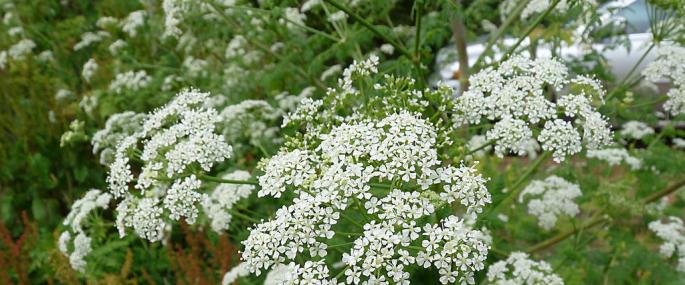A notoriously poisonous plant, Hemlock features in history as the plant that was given to the famous Greek philosopher, Socrates, at his execution. But the repellent smell of the crushed leaves of Hemlock luckily helps to ensure that accidental poisonings don't occur very often - even livestock studiously avoid it. This biennial plant prefers damp ground and can grow in huge colonies on waste ground, riverbanks and ditches, but can also be seen along roadside verges. It produces umbels (umbrella-like clusters) of white flowers in June and July.
Our native wildflowers, such as Hemlock, provide important links in the food chain for many other animals, as well as areas for shelter and material for nesting. The Wildlife Trusts recognise the importance of healthy habitats to support all kinds of species throughout the food chain, so look after many nature reserves for the benefit of wildlife. You can help too: volunteer for your local Wildlife Trust and you could be involved in everything from coppicing to craft-making, stockwatching to surveying.
